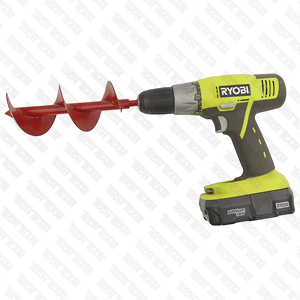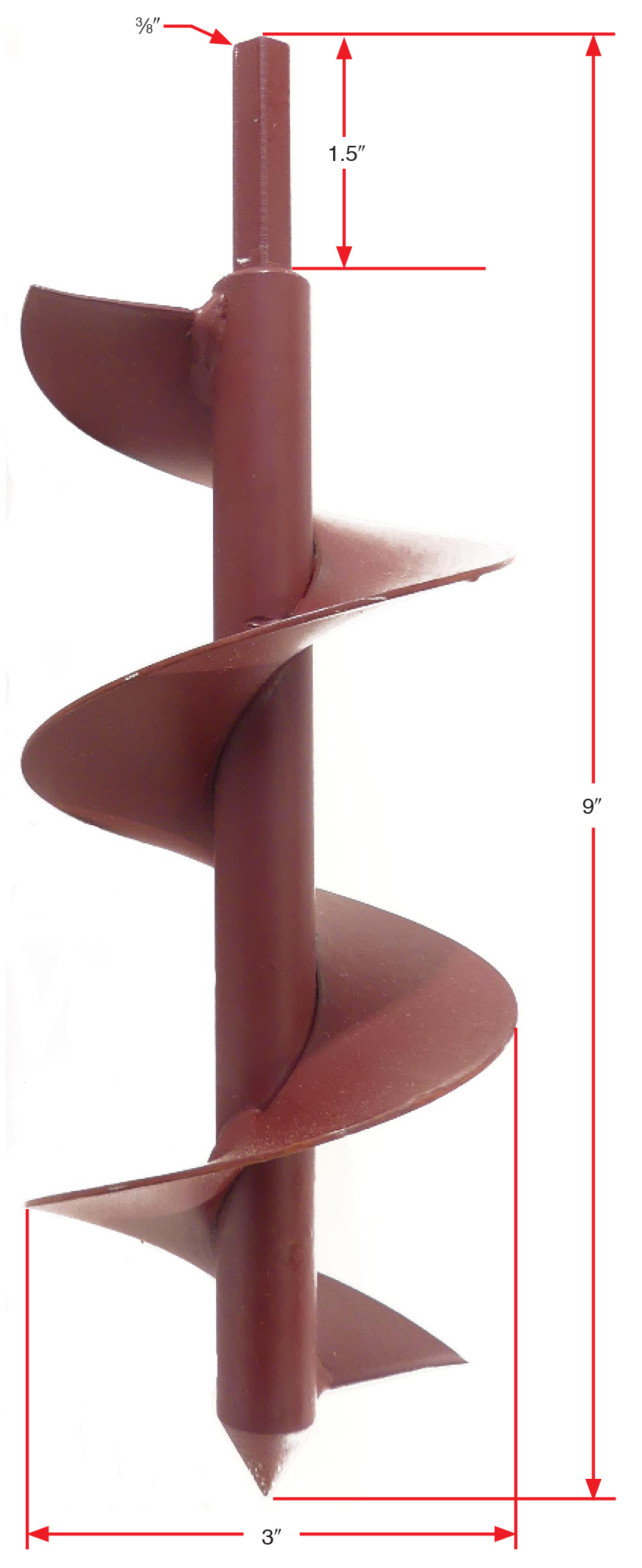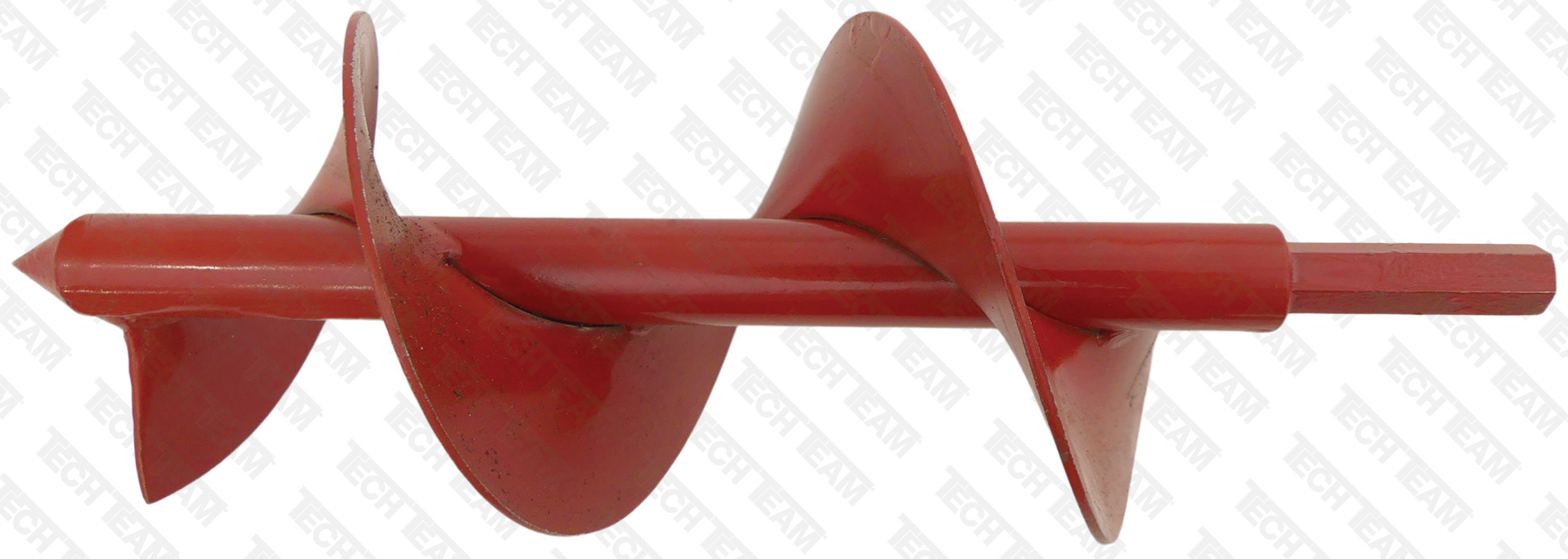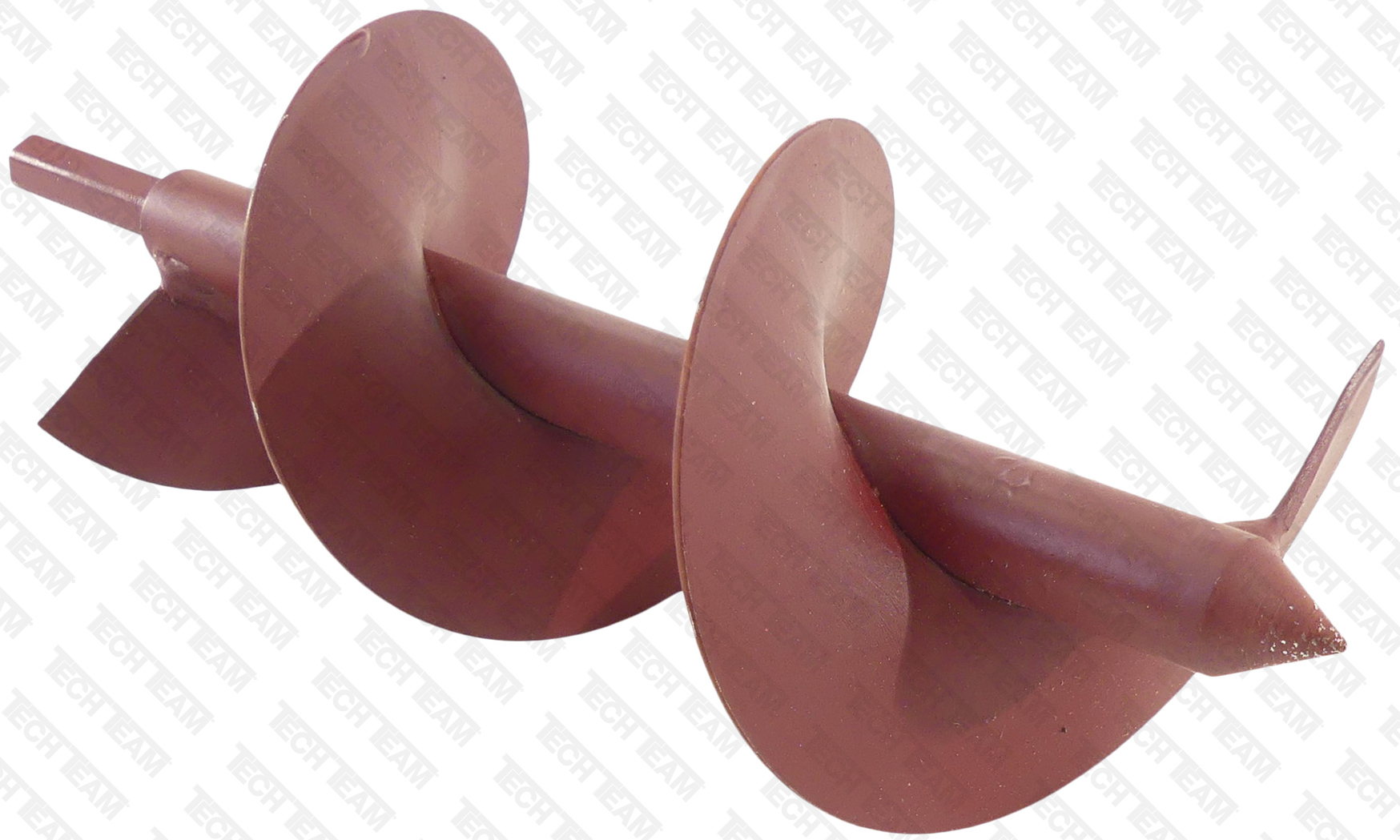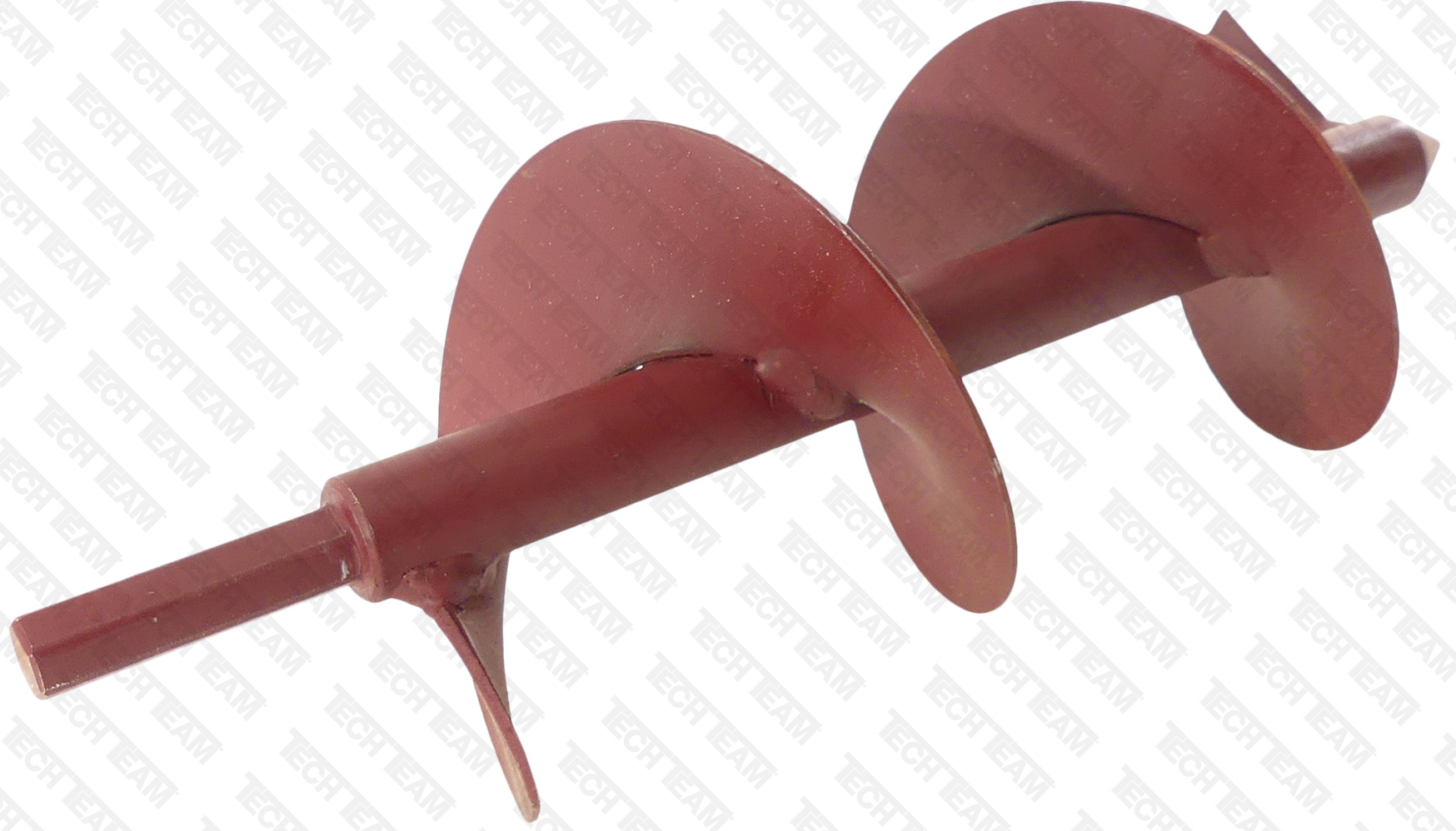Description
Product Details
Heavy duty 100% laser cut and welded helical steel flights with a slip proof hex shaft that fits 3/8” power drills. It makes a clean, 3” diameter hole in moist loam or pond ice. Perfect for bulbs and seedlings.
The Tech Team 24” x 13” Power Auger Bulb Planter fits 3/8” power drills and screw guns. It easily digs clean 3-inch diameter holes for bulbs, small plants, and seedlings in moist loam or soil. The bulb planter is made from 100% welded steel.
Tech Team’s 24-inch x 3-inch Power Auger is the ideal implement for making precise round holes to plant flower bulbs such as tulips, iris, crocus, and daffodil. It also works extremely well for planting seedlings such as tomatoes, peppers, eggplants, and cabbage not to mention onions. The fact that the auger burrows into even tight heavy clay soil, allows you to effectively dig up and/or cut off the roots of weeds such as milk weed, dandelion, wild onion, and raspberry.
You, of course, can use a 110 volt power drill to operate the auger, but in most garden situations, a typical cordless drill, particularly of the 18 volt variety that has a chuck that will fit a 3/8” bit is the perfect accessory for using the auger to make holes in the garden soil for the purpose of planting seedlings and bulbs. The auger operates best in moist loamy soil as it quickly and efficiently burrows into the earth and removes the soil.
Whether your intention is to plant 4-5 bulbs or seedlings or 400-500, this is the absolutely perfect accessory. In order to drill holes to a specific depth it is a good idea to use a piece of electrical tape on one of the vanes of the auger at the specific depth you want to drill, so that it becomes a gauge for drilling subsequent holes. You need to keep in mind, different kinds of bulbs require different depth holes. The rule of thumb generally is 3x’s the diameter of the bulb should be the maximum depth of the hole.

